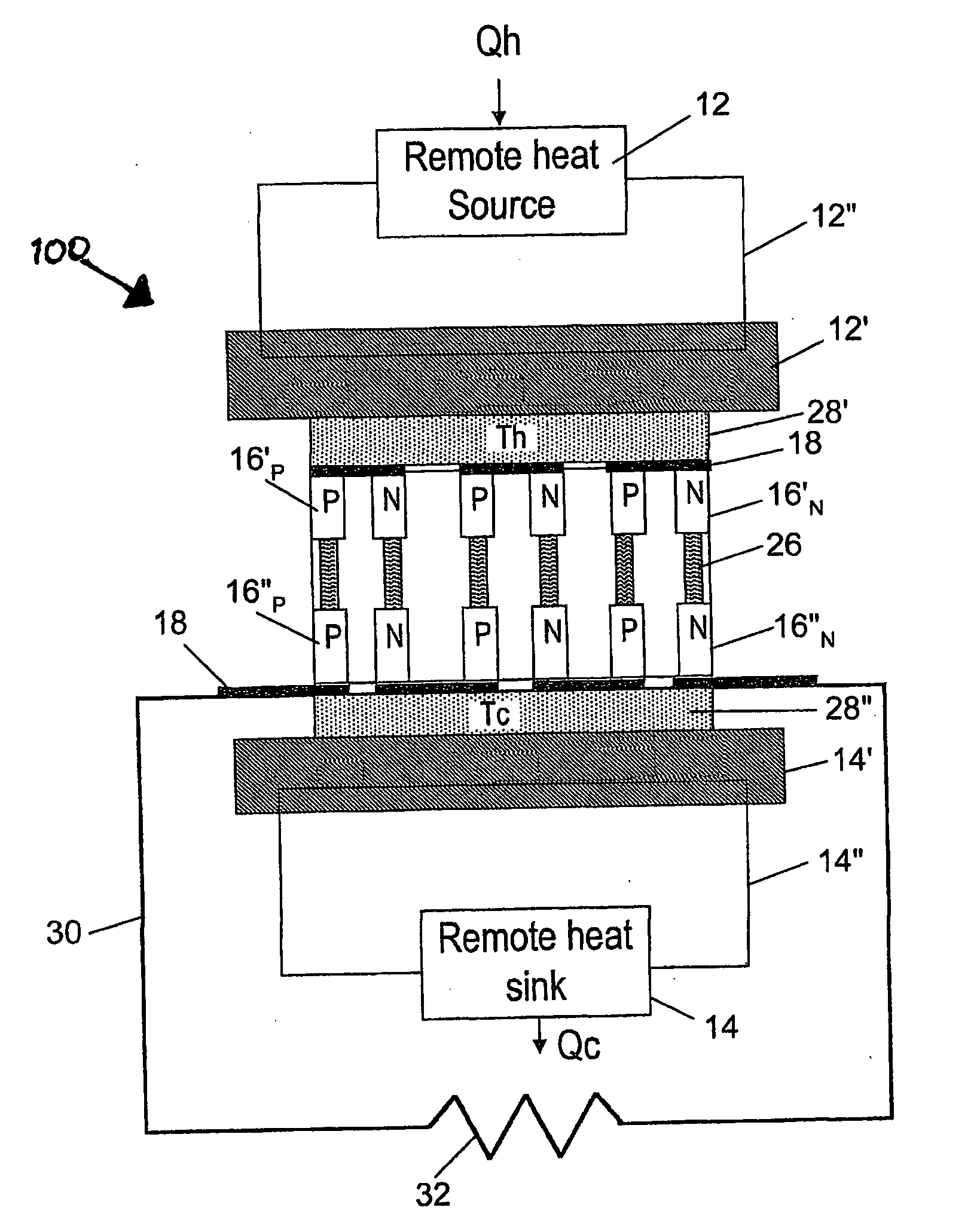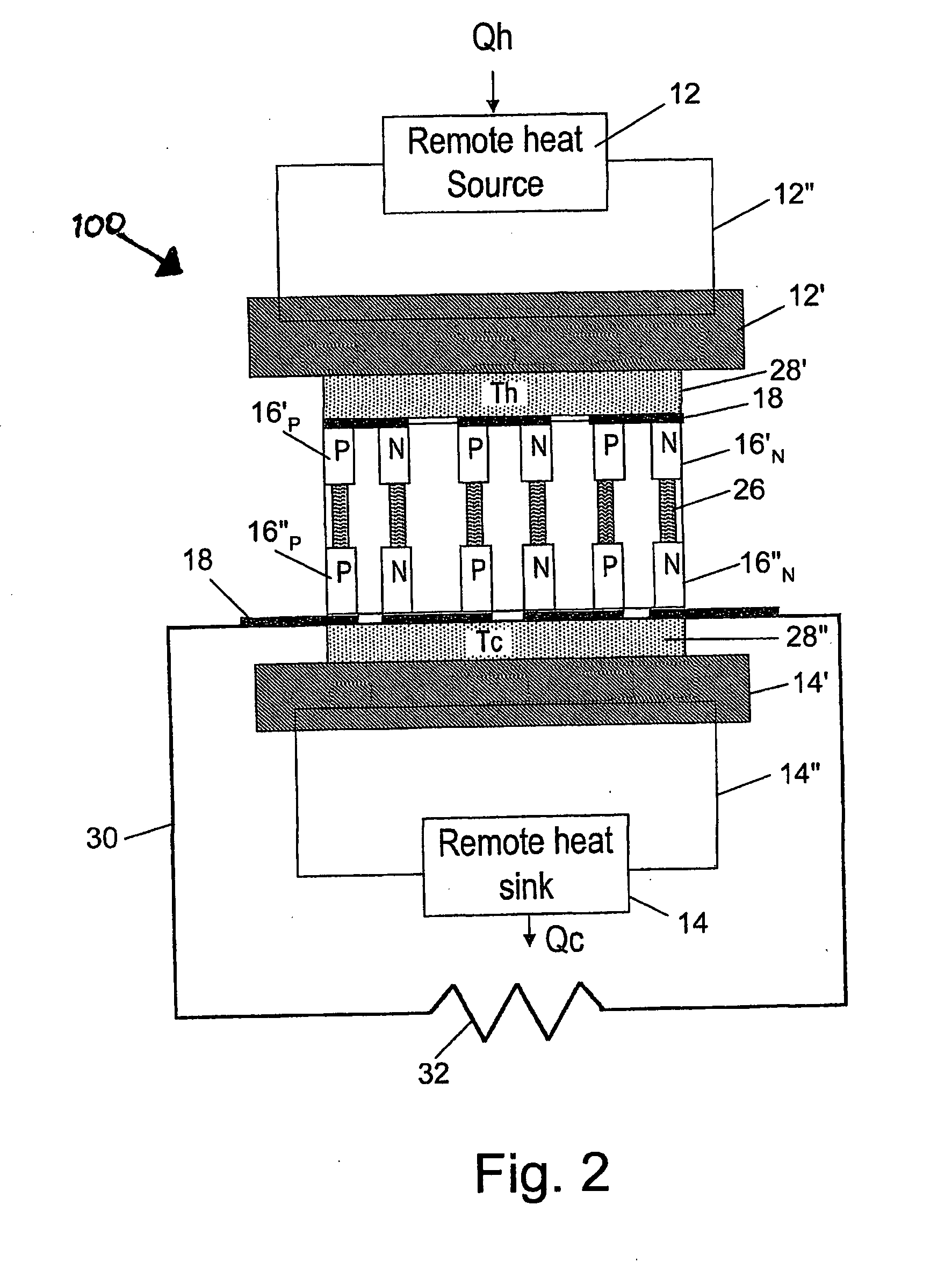Split thermo-electric structure and devices and systems that utilize said structure
- Summary
- Abstract
- Description
- Claims
- Application Information
AI Technical Summary
Benefits of technology
Problems solved by technology
Method used
Image
Examples
example 1
[0052]Three split thermo-electric structures similar to that shown in FIG. 4A are constructed wherein L1=L3=1 mm and L2=40 mm for all three structures. The boundary conditions are T1=40 degC and T4=70 degC for all structures. The cross-sectional areas of the elements and internal interface temperatures are as shown in Table 1. The temperatures at the interfaces between elements of the thermo-electric structures of this example are shown in FIG. 5A.
TABLE 1StructureA1A2A3T1T2T3T419794084697029716408266703167940685570
example 2
[0053]Four split thermo-electric structures similar to that shown in FIG. 4A are constructed wherein L1=L3=1 mm and L2=40 mm for all four structures. A1=9 mm2, A2=7 mm2, and A3=16 mm2 for all four structures. The boundary conditions are T1=40 degC and T4=60, 70, 80, and 90 degC for each of the structures respectively. The temperatures at the interfaces between elements of the thermo-electric structures of this example are shown in Table 2 and FIG. 5B.
TABLE 2StructureT1T2T3T4140766060240826670340887380440948090
example 3
[0054]Three split thermo-electric structures similar to that shown in FIG. 4B are constructed wherein A1=25 mm2, A2=7 mm2, A3=25 mm2, A4=7 mm2, and A5=25 mm2 for all three structures. The boundary conditions are T1=45 degC and T6=50 degC for all structures. The lengths of the elements and internal interface temperatures are as shown in Table 3. The temperatures at the interfaces between elements of the thermo-electric structures of this example are shown in FIG. 6A.
TABLE 3StructureL1L2L3L4L5T1T2T3T4T5T6114014014562516147502120160145625767485031601201456146544750
PUM
 Login to View More
Login to View More Abstract
Description
Claims
Application Information
 Login to View More
Login to View More - R&D Engineer
- R&D Manager
- IP Professional
- Industry Leading Data Capabilities
- Powerful AI technology
- Patent DNA Extraction
Browse by: Latest US Patents, China's latest patents, Technical Efficacy Thesaurus, Application Domain, Technology Topic, Popular Technical Reports.
© 2024 PatSnap. All rights reserved.Legal|Privacy policy|Modern Slavery Act Transparency Statement|Sitemap|About US| Contact US: help@patsnap.com










